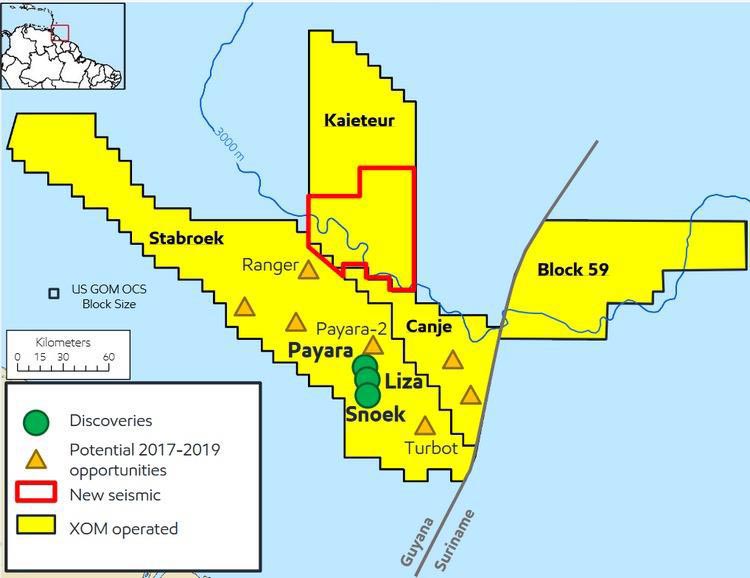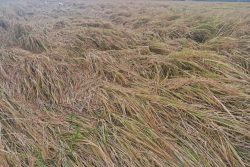ExxonMobil has started drilling operations at the Bulletwood-1 well site in the controversial offshore Canje block.
“The first well in the Canje block, Bulletwood-1 was spudded at the end of last month by the Stena Carron. We expect to be on location for several weeks,” ExxonMobil’s Public Affairs Advisor Janelle Persaud told Stabroek News on Tuesday. No further information was provided.
ExxonMobil had said that it has some three wells scheduled to be drilled in the Canje block.
A notice by the Maritime Adminstration Department (MARAD) stated that as of January 1st, 2021, Esso Exploration & production Guyana Ltd (EEPGL) will continue with the exploration drilling operation at Bulletwood-1 well site.
“MODU Stena Carron will continue drilling activities which will concluded on February 23, 2021…” the notice read.
Following the publication of the notice, Westmount Energy Limited on Tuesday issued a statement saying that it was pleased to note the announcement by MARAD and said that the Stena Carron drillship recently arrived on location at the Bulletwood-1 wellsite and had commenced drilling operations.
Westmount holds an indirect interest in the Canje Block as a result of its roughly 7.2% interest in the issued share capital of JHI Associates Inc. The Canje Block is currently operated by an ExxonMobil subsidiary EEPGL with 35%, French oil major, Total with 35%, JHI with (17.5%) and Mid-Atlantic Oil and Gas Inc 12.5% as partners.
According to Westmount, Bulletwood-1 is a 500 MMbbl oil prospect targeting a Liza look-alike, confined channel complex of Late Cretaceous, Campanian age.
The statement further added that as a result of a 2018 farm-out to Total, JHI is carried for the drilling of up to four wells including Bulletwood-1 and is funded for the drilling of additional wells.
Exxon in November 2020 used the Stena Carron to drill at the Tanager-1 well, which is the deepest well drilled offshore Guyana and globally by Exxon.
Unlike ExxonMobil’s previous Guyana wells which were drilled in the Stabroek offshore block, and which discovered more than 8 billion barrels of oil, the Tanager-1 well was drilled in the nearby Kaieteur Block, and was reported to be a non-commercial discovery.
ExxonMobil is the operator of all three deepwater blocks: the Stabroek, Kaieteur and Canje and the circumstances of its buying into the operations of the latter two have come in for much scrutiny. This is because months after the signing of its renegotiated Stabroek Block Production Sharing Agreement (PSA) in June 2016, the company bought shares in both the Canje and Kaieteur blocks. The Canje and Kaieteur Blocks had been controversially awarded in 2015 just prior to Exxon’s first major oil strike in the Stabroek Block. The small companies that snagged the rights did not have the required capital and expertise to explore the blocks.
The Canje Block was part of the total acreage awarded to ExxonMobil in the original 1999 PSA when the areas were simply named after the first four letters of the alphabet. Shell had first given up its share in 2010 indicating to the Government of Guyana that it was changing its investment strategy. ExxonMobil would in 2012 also let the area be returned to the state as part of the relinquishment agreement under the 1999 PSA. ExxonMobil is now back in the Canje Block as a result of farm-in deal.









